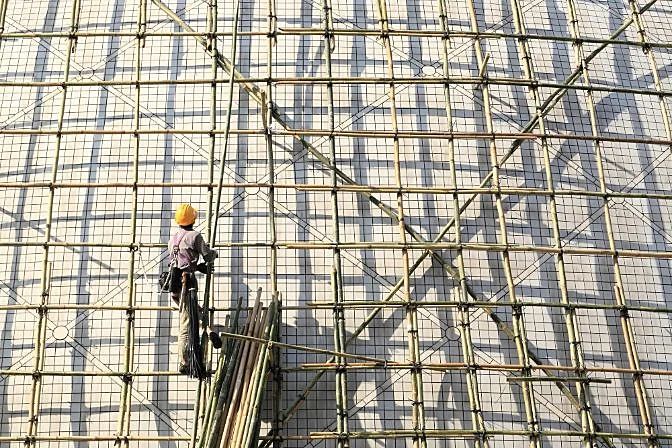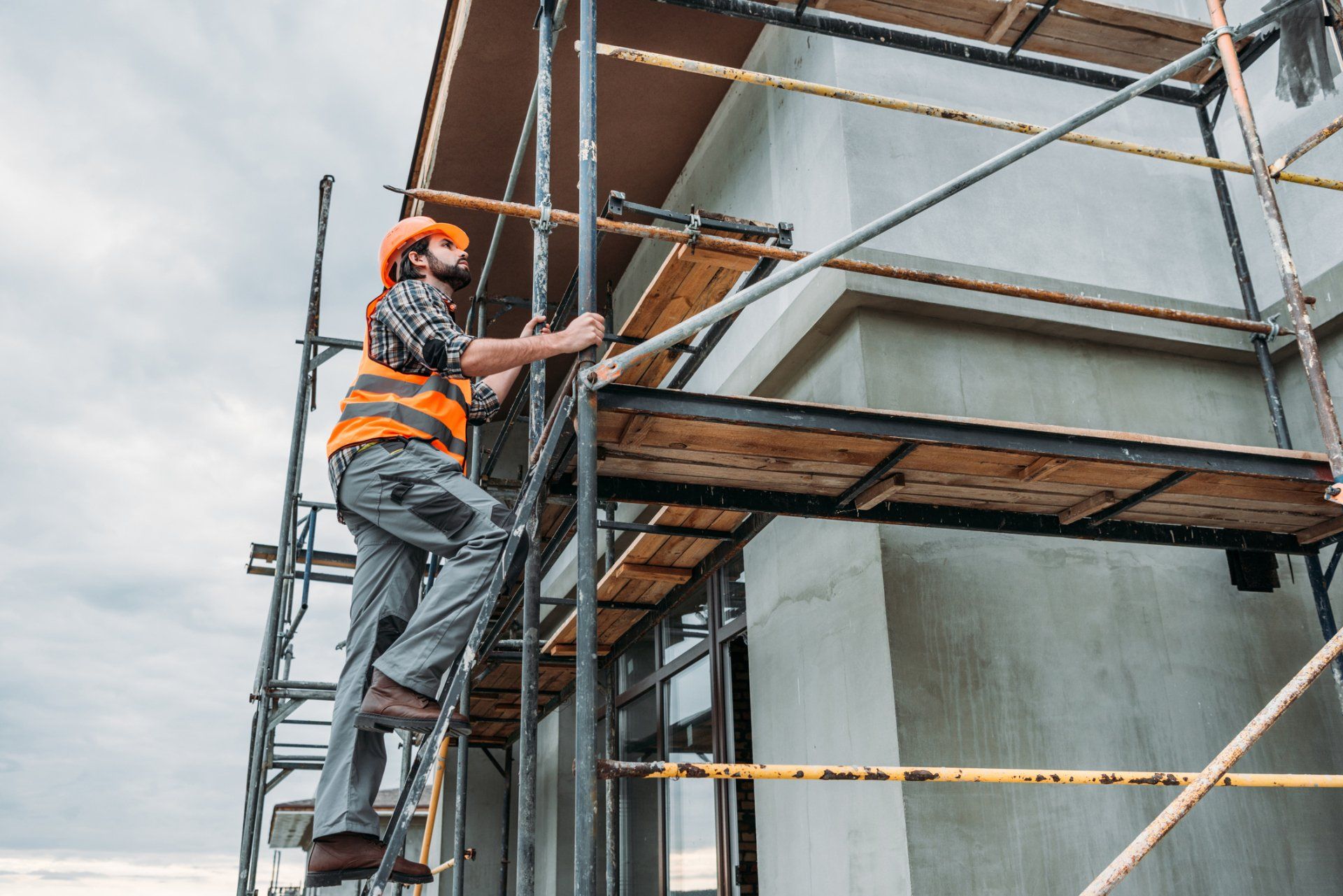Temporary Roof Scaffolding to Ensure Safe Working Conditions During Projects
The Advantages of Scaffolding for Safety And Security and Effectiveness in Structure Projects
Scaffolding is an essential component in the world of construction, significantly adding to both safety and functional efficiency. By providing protected platforms and boosted access to raised workspace, scaffolding not just alleviates fall hazards but also improves the process for building groups. Its versatility enables for adjustment throughout numerous job kinds, ensuring conformity with safety and security policies. However, the impact of scaffolding extends past standard safety actions; its calculated implementation can change job timelines and results. Exploring these diverse benefits reveals insights that are crucial for any building expert.
Boosted Worker Safety

Boosted worker security is a vital issue in the building industry, where the risks connected with falls and mishaps can have dire effects. Efficient scaffolding systems play an essential function in mitigating these threats by giving steady systems for workers at elevated heights. By ensuring that scaffolding is effectively set up and kept, building companies can considerably reduce the likelihood of drops, which are among the leading root causes of workplace injuries and fatalities.
In addition, scaffolding improves safety through its layout attributes. Guardrails, toe boards, and non-slip surfaces add to a protected functioning environment, decreasing the risk of mishaps. Additionally, scaffolding allows workers to gain access to hard-to-reach locations without the demand for makeshift remedies, which can endanger safety and security requirements.
Training workers on the correct use scaffolding is equally essential. Guaranteeing that employees are well-informed about load capabilities, setting up procedures, and security protocols additionally boosts the efficiency of scaffolding in protecting against accidents. To conclude, incorporating robust scaffolding systems within building and construction projects not just enhances employee security but also advertises a society of safety that benefits the whole labor force while improving general efficiency.
Improved Gain Access To and Movement

Moreover, scaffolding permits the convenient transportation of devices and materials, decreasing downtime associated with relocating equipment. Employees can successfully access numerous areas of a task, which is specifically crucial in intricate builds where vertical and horizontal movement is frequent - Scaffolding. This ease of access not only enhances operations yet likewise allows groups to respond quickly to altering task needs
In addition, scaffolding can be customized to suit particular website problems, enhancing wheelchair in tight or irregular spaces. This versatility ensures that building activities can proceed smoothly, regardless of the challenges offered by the environment. By fostering enhanced accessibility and wheelchair, scaffolding plays an important role in sustaining building teams and maximizing the overall efficiency of building jobs.
Raised Task Effectiveness
In construction, project performance is dramatically affected by the reliable use scaffolding systems. By supplying a safe and secure and stable platform for workers, scaffolding lessens downtime and increases the pace of building activities. With improved access to raised job areas, groups can complete tasks faster, minimizing the total task timeline.
The modular nature of modern scaffolding click over here now enables quick setting up and disassembly, making it possible for quick shifts in between different phases of a job. This versatility not just enhances operations however additionally adds to far better control amongst different professions, as multiple teams can work simultaneously on various areas of a framework.
Furthermore, scaffolding makes certain that employees are positioned properly to perform their tasks without unnecessary strain or risk of injury, thereby lowering Home Page the likelihood of crashes that can cause costly hold-ups. Enhanced precaution embedded in scaffolding systems, such as guardrails and toe boards, more assistance effective next page procedures by keeping employee concentrate on the job available instead than safety and security problems.

Convenience for Various Tasks
Scaffolding systems attract attention for their adaptability throughout a variety of building and construction tasks, with the ability of conference particular website demands and tasks. Their modular design allows for quick modifications to suit different building types, from residential to commercial frameworks, making sure that workers have safe access at various elevations and angles.
These systems can be customized for varied applications, such as façade job, interior remodellings, or durable industrial tasks. Light-weight light weight aluminum scaffolds are excellent for indoor work, while robust steel structures offer the needed assistance for large-scale construction. The versatility of scaffolding includes its capacity to be set up for both short-lived and long-term structures, permitting contractors to efficiently intend and implement their tasks.
Additionally, scaffolding can be utilized in challenging atmospheres, including metropolitan setups where space is limited or on irregular surface where traditional gain access to solutions are not practical. This versatility minimizes the requirement for numerous gain access to services, lowering expenses and project timelines. By accommodating a selection of tasks and conditions, scaffolding boosts the general efficiency and effectiveness of building initiatives, proving to be an essential property in the building sector.
Conformity With Safety And Security Requirements
Just how can construction projects make certain the safety and security of workers while preserving efficiency? Compliance with safety criteria is extremely important in achieving this equilibrium. Regulatory frameworks, such as OSHA in the United States, provide standards that govern using scaffolding, ensuring that it meets strict safety and security requirements. By adhering to these criteria, building and construction companies can decrease the risk of accidents, which not just secures workers but also boosts overall job effectiveness.
Proper scaffolding layout and installment play a vital function in compliance. Training employees on safe scaffold use and the value of compliance with safety requirements even more strengthens a society of safety on-site.
Furthermore, documents and record-keeping pertaining to safety inspections and worker training are important. These methods not only demonstrate conformity yet additionally give liability and openness. Inevitably, by focusing on adherence to safety and security standards, building tasks can cultivate a much safer workplace, therefore enhancing productivity and effectiveness without jeopardizing employee safety.
Final Thought
In conclusion, scaffolding serves as a vital component in building tasks, dramatically improving safety and effectiveness. Adherence to security criteria underscores the value of scaffolding in accomplishing successful task end results, making it important in the building market.
Scaffolding is a crucial component in the world of construction, significantly contributing to both safety and security and operational effectiveness. The impact of scaffolding expands beyond standard security steps; its calculated implementation can change job timelines and outcomes. In verdict, including robust scaffolding systems within building projects not just boosts worker security however likewise promotes a culture of safety and security that benefits the entire labor force while boosting total productivity.
In conclusion, scaffolding offers as a vital component in structure projects, substantially boosting safety and efficiency. Adherence to safety and security criteria underscores the relevance of scaffolding in attaining successful job outcomes, making it vital in the construction sector.